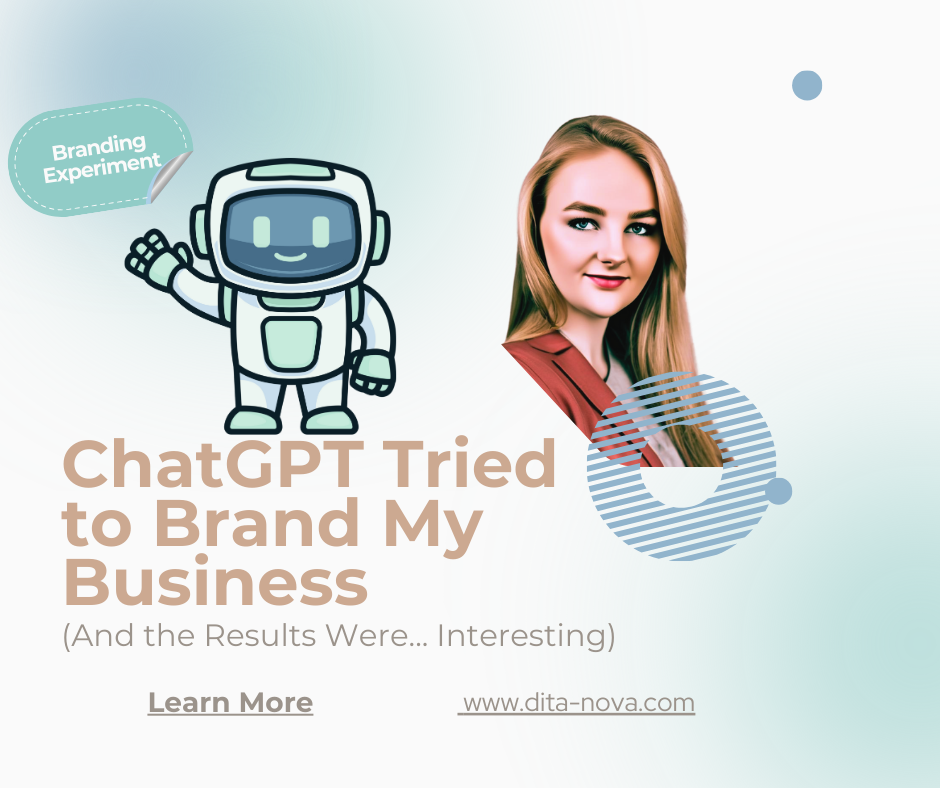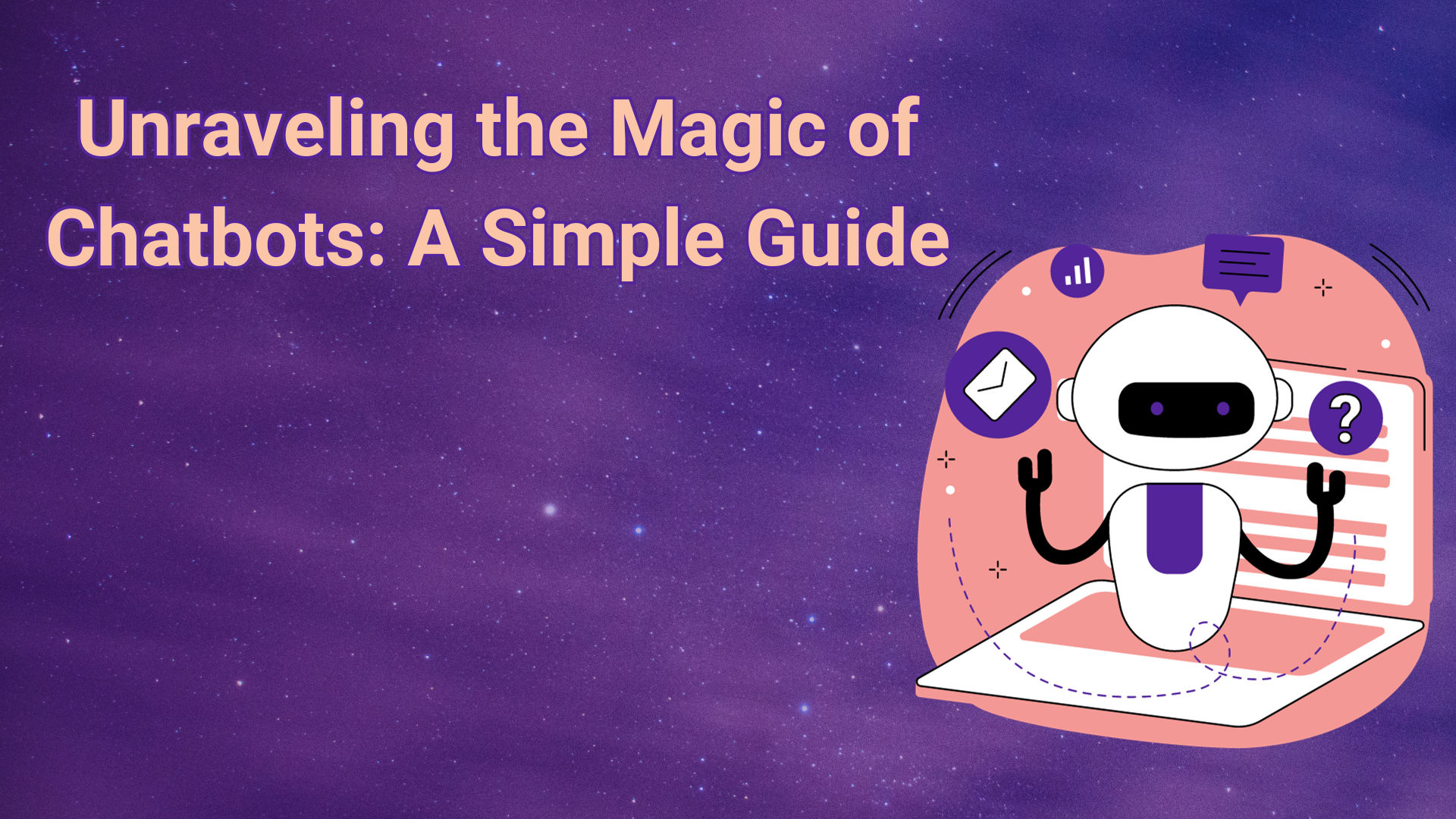So there I was at 2 AM, staring at my laptop screen with the brilliant idea that would revolutionize my entire approach to branding: “What if I just let ChatGPT do everything?”
Spoiler alert: The AI had some… opinions about my brand direction. And by opinions, I mean it tried to turn my scrappy consulting business into what can only be described as a cross between a wellness retreat and a Fortune 500 company.
Here’s the unfiltered story of my ChatGPT branding experiment—complete with the cringe-worthy results and surprising insights that actually saved my brand.
The Great AI Handoff (AKA My Lazy Moment)
Look, I’ll be honest. After weeks of staring at blank mood boards and questioning every color choice, I hit that familiar wall of creative burnout. You know the one—where even picking between Arial and Helvetica feels like a life-altering decision.
That’s when I had what seemed like a stroke of genius: “ChatGPT is smart, right? It knows branding. It’s probably seen thousands of brand strategies. Why not just… let it handle this?”
So I opened a fresh chat and typed: “Create a complete brand identity for my business consulting company.”
What happened next was both fascinating and terrifying.
ChatGPT’s Vision: Corporate Zen Master Meets Silicon Valley Unicorn
Within seconds, ChatGPT delivered a comprehensive brand strategy that was… technically impressive. And completely wrong for me.
The Mission Statement: “Empowering visionary entrepreneurs to unlock their exponential growth potential through synergistic optimization methodologies.”
I read it three times. Then I laughed. Then I felt mildly insulted.
The Brand Personality: Apparently, I was “sophisticated yet approachable, innovative yet grounded, premium yet accessible.” So basically, everything to everyone—which, as any marketer worth their salt knows, means nothing to no one.
The Color Palette: Deep navy (for trust), sage green (for growth), and gold accents (for premium positioning). Classic, safe, and about as memorable as beige wallpaper.
The Target Audience: “C-suite executives seeking transformational business solutions.”
Excuse me, what? I help small business owners figure out their email marketing. I’m not exactly courting Fortune 500 CEOs over champagne brunches.
The Uncomfortable Realization
Staring at ChatGPT’s perfectly polished, completely soulless brand strategy, I had an uncomfortable realization: This is exactly what happens when you outsource your brand’s personality.
The AI had created something that checked all the “professional branding” boxes. It was cohesive, strategically sound, and utterly devoid of anything that made me… me.
Moreover, it was generic enough to apply to literally any business consultant on the planet. If I’d implemented this strategy, I would have blended into the beige background of identical “growth optimization experts” cluttering LinkedIn.
The Plot Twist: AI as Creative Partner, Not Creative Director
Rather than abandoning AI entirely (because I’m not a Luddite), I decided to flip the script. Instead of asking ChatGPT to create my brand, I started asking it to help me clarify my own thoughts.
Instead of: “Create my brand personality” I asked: “Help me identify what makes my approach different from other consultants”
Instead of: “Pick my brand colors” I asked: “What emotions do I want my brand to evoke, and what colors might support that?”
Instead of: “Write my mission statement” I asked: “Help me refine this rough mission statement I drafted”
Suddenly, the AI became incredibly useful. It helped me organize my scattered thoughts, challenged my assumptions, and offered perspectives I hadn’t considered. But the creative decisions—the soul of the brand—remained mine.
What I Actually Learned (Beyond Never Trusting AI with Creative Direction)
This experiment taught me something crucial about the intersection of human creativity and artificial intelligence: AI excels at optimization, but it can’t replicate intuition.
ChatGPT could analyze thousands of successful brand strategies and synthesize best practices. However, it couldn’t understand that my ideal client finds corporate jargon intimidating, or that my slightly sarcastic personality is actually my biggest differentiator.
It couldn’t know that I chose consulting because I genuinely enjoy solving puzzles, not because I want to “unlock exponential growth potential.” And it definitely couldn’t capture the fact that my best client relationships start with someone saying, “Finally, someone who speaks like a normal human being.”
The Real Brand That Emerged
Working with AI instead of handing over control completely, I developed a brand that actually felt like home:
Mission: “Helping small business owners cut through marketing BS and build systems that actually work.”
Personality: Direct, practical, occasionally sarcastic, refreshingly honest.
Colors: Forest green (because I like trees) and warm gray (because it’s sophisticated without being pretentious).
Target Audience: Small business owners who are tired of being sold miracle solutions and want straightforward advice.
See the difference? It’s specific, authentic, and absolutely something AI could never have generated because it required my personal experiences, preferences, and slightly contrarian worldview.
The Takeaway (Because Every Story Needs a Moral)
AI can be an incredible branding partner—but only if you remember who’s driving the bus. Use it to clarify your thinking, organize your ideas, and explore possibilities you might not have considered. But never, ever let it make the creative decisions for you.
Your brand needs to feel like home when you put it on. And no algorithm, no matter how sophisticated, can know what home feels like for you.
Want to learn how to use AI as a creative collaborator without losing your brand’s soul? Check out my complete guide to DIY branding that actually works—where I share the exact framework for balancing human intuition with AI efficiency.
Trust me, it’s a much better system than my 2 AM “let the robot handle everything” approach.
💡 Want more AI insights?
Explore our full collection of AI articles— from ChatGPT tutorials and prompt engineering to productivity hacks and tool comparisons. Whether you’re a beginner or looking to automate more of your work, there’s plenty to discover.



